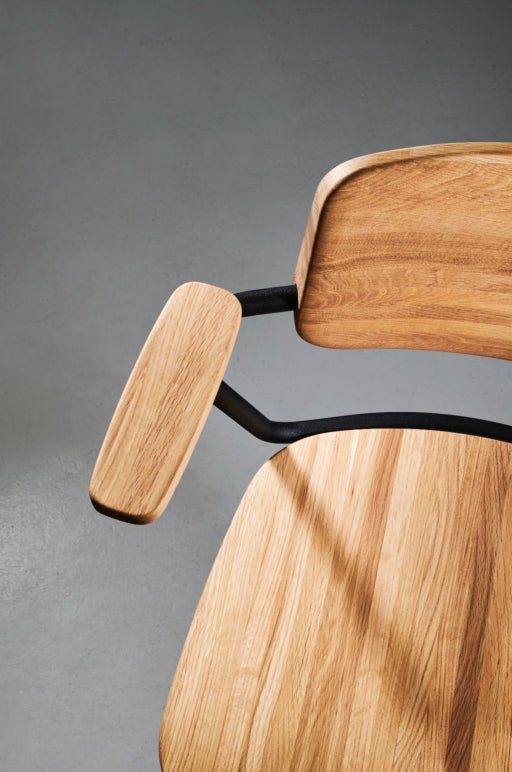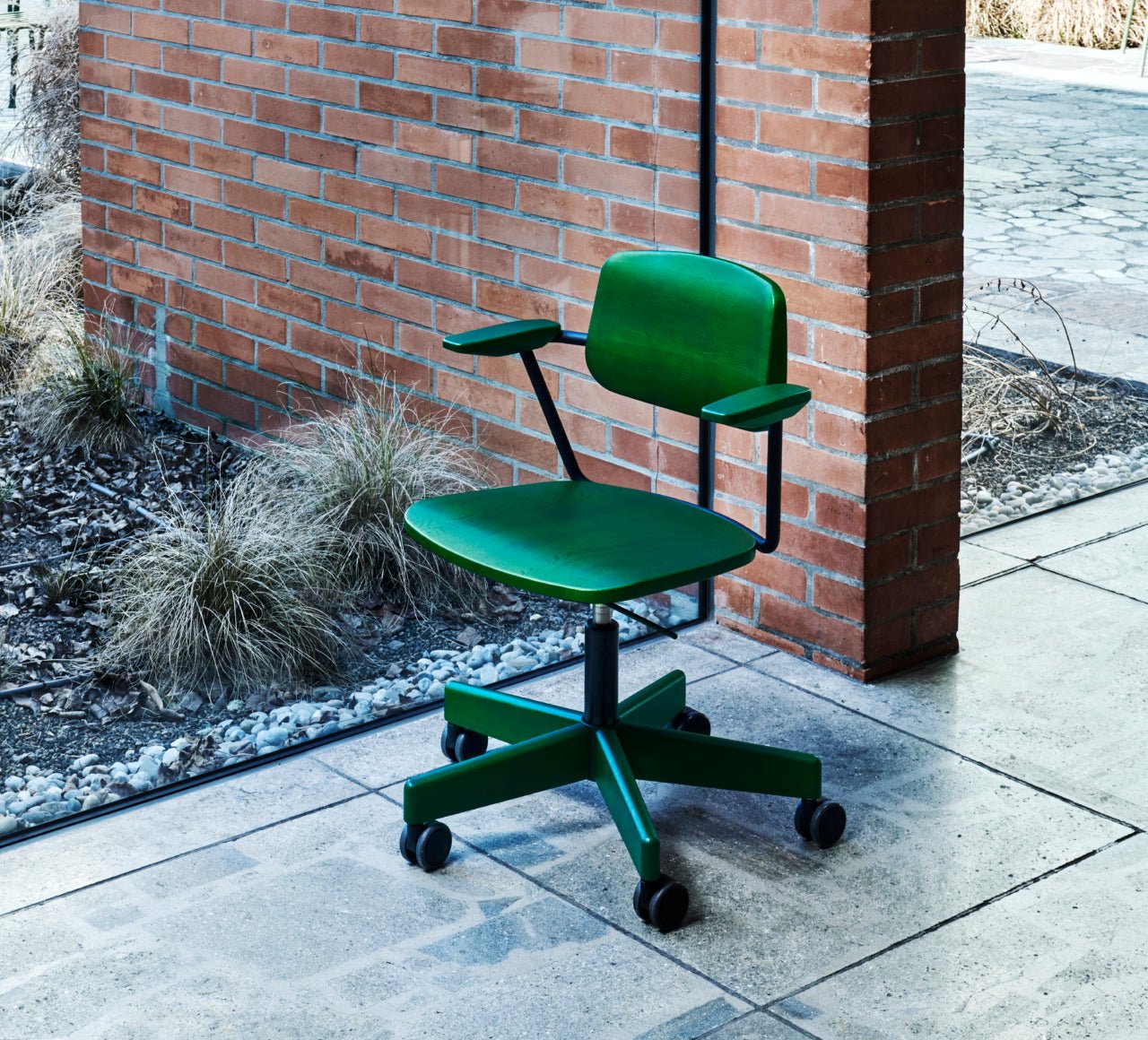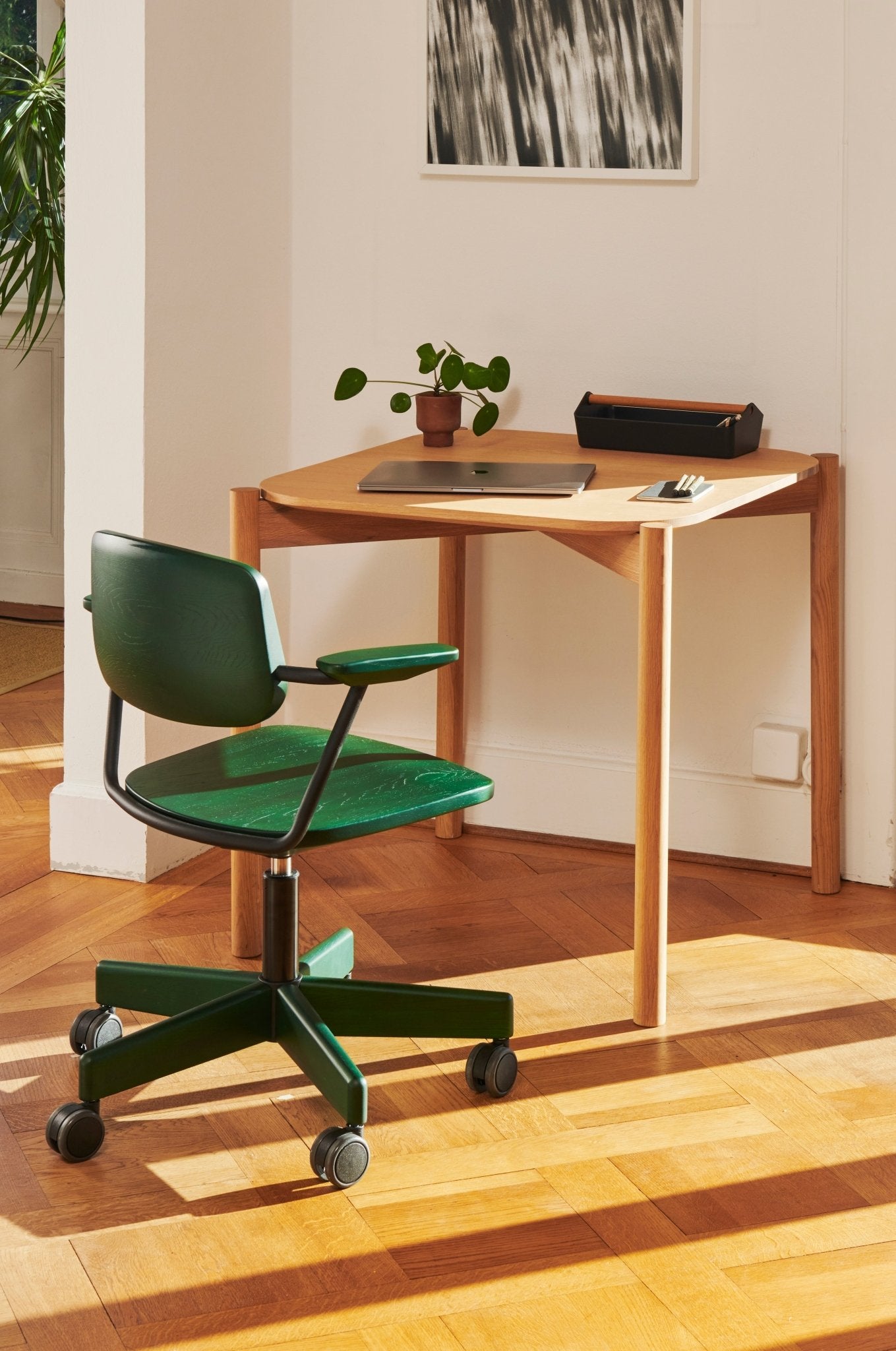GULMOHAR WOOD WORKS - Made In Bangalore
GIROFLEX 150 - Designed by BIG-GAME & KARIMOKU
GIROFLEX 150 - Designed by BIG-GAME & KARIMOKU
Couldn't load pickup availability
Giroflex 150 is designed in a collaboration between Swiss industrial design studio BIG-GAME, Japanese woodworking specialists Karimoku New Standard and work seating manufacturer Giroflex – ‘Giroflex 150’ is a reinterpretation of the classic wooden office chair.
Founded by Augustin Scott de Martinville, Elric Petit and Grégoire Jeanmonod, brilliantly crafting innovative products – BIG-GAME describes its work as simple, functional and optimistic.
Functionally and aesthetically suited to both home and office work environments, as well as meeting the sustainability expectations of the present day – Giroflex 150 looks to the future while honoring the past.
Distinctly contemporary and ergonomically advanced – it’s a celebration of the beauty of natural materials.
Developing giroflex 150
To develop the concept for the giroflex 150, BIG-GAME turned to the brand’s archives for inspiration, looking back over hundreds of wooden office-chair designs, dating back to the turn of the 20th century. Giroflex has a strong heritage in wooden chairs, having been founded first as a maker of bentwood furniture, before pivoting into workplace seating with the rise of office culture at the beginning of the 20th century.
One particular series of chairs, the Holson, created in the 1950s by influential German designer Arno Votteler, caught the team’s attention. Each key touchpoint of the Holson is made from wood and shaped for optimal comfort. It was a chair that was clearly built to last, from materials that aged with grace over time.
Whenever we find a vintage Giroflex wooden chair in a second-hand shop, we’re amazed by how comfortable it still is. This is a great lesson from the past on durability and quality. People would keep hese chairs throughout their careers, for all their lives.
BIG-GAME
BIG-GAME’s goal for the giroflex 150 was therefore to create a chair that matched the Holson in terms of character, comfort, and longevity – a piece with an heirloom quality that would age alongside its owner, while never faltering in performance. Unlike the office chairs of recent decades – bulky, padded, and increasingly overcomplicated – the giroflex 150 is intended to take things back to basics and underline classic Swiss design values by being reliable, sturdy, understated, and of the highest possible quality.
Japanese craft with high-touch quality
The wooden parts of the giroflex 150 are fashioned from timber from Japanese oak species (Quercusserrata and Quercus mongolica) by longstanding BIG-GAME collaborators, the expert woodworkers at Karimoku New Standard (KNS). The timber used is sourced from slender young-growth trees that would otherwise be discarded or pulped to make paper. Once felled, these trees are cut and replaced by other species in an effort to enhance biodiversity (making the forest more resilient). Making use of their extraordinary skill in Japanese wood joinery, the KNS team have developed ways to turn this wood, almost considered waste, into a beautiful and durable furniture material. Turning waste wood into a long-lifespan product locks in CO2, making KNS’s approach one of the most sustainable methods to create products possible.
This wood is transparently sourced from responsibly managed forests in northern Japan, transported to Karimoku’s workshops in Aichi Prefecture, then crafted – by machine and hand – into wooden backrest, seat, arms and footbase, with that enjoyable high-touch quality.
Synchro Motion that excites
The crafted oak components are held in place by a flexible steel structure and synchro motion mechanism cleverly engineered by Giroflex to fit under the seat. Putting simplicity at the forefront, other than the gas lift to alter the height of the seat, BIG-GAME has designed the giroflex 150 without the adjustable features typical of modern office chairs. Instead, the properties of the materials and the sophistication of Giroflex’s engineering allow the chair to naturally adapt to the weight of the sitter, and to dynamically respond to their movements.
We wanted a wooden chair with a very contemporary sensation of balance and dynamism to it. There is a tilt point underneath the seat and another one under the backrest. Using the sitter’s body weight to create balance, this movement naturally accommodates different body positions throughout the day. The experience can be very surprising, as first-time users expect to sit on a rigid wooden chair and don’t expect the mechanism’s softly articulated seat and backrest to accommodate their posture.
BIG-GAME
Share

















